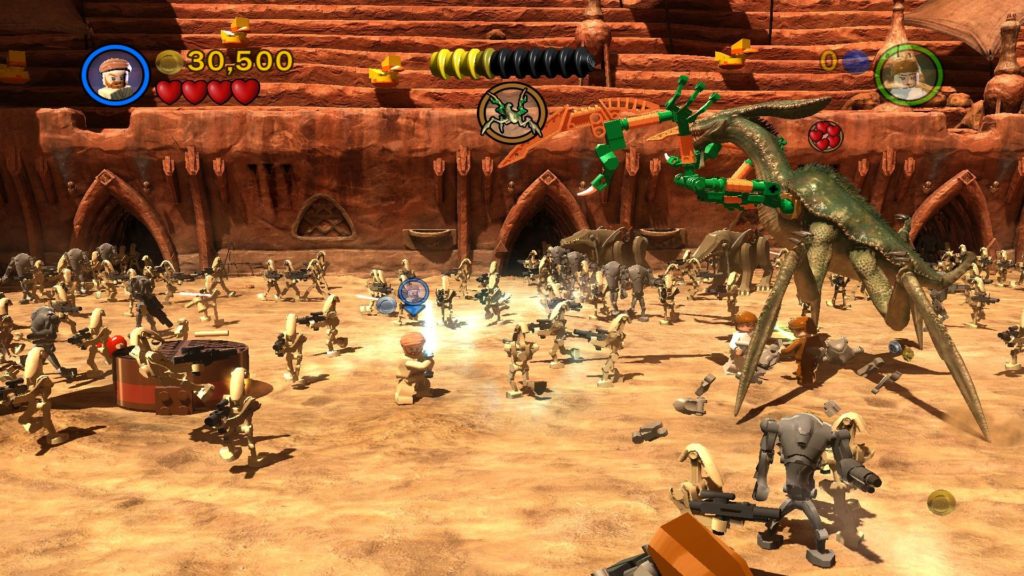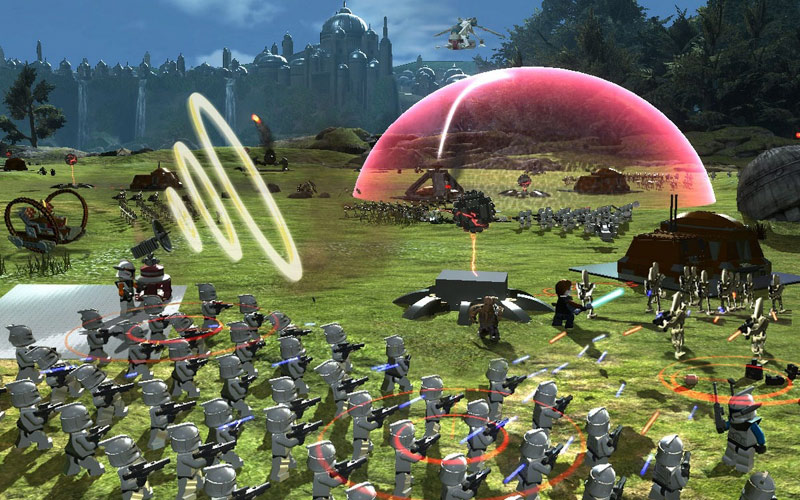
The Lego games have been one of gaming’s greatest institutions for over a decade now, with dozens of different franchises getting the Lego treatment. Without fail, you can count on at least one or two new entries from developer Traveller’s Tales every year. And last year took things to new heights with the release of Lego Dimensions, a massive, toy-to-life crossover title that brings together numerous franchises into a single title.
Lego has come a long way, and so much of that was built on the fact that Traveller’s Tales got things so right with their first attempt all the way back in 2005: Lego Star Wars. That first game, along with its immediate follow-up, The Original Trilogy, introduced numerous staples that remain a part of the larger series’ DNA to this day. Even those who are exhausted by the formula these days would have a hard time arguing how well-developed the initial concept was.
Still, there are those who feel that Traveller’s Tales has gotten a bit repetitive, failing to ever truly take the concept to the next level; a lot of what you do in this year’s Lego Marvel’s Avengers is the exact same as it was a decade ago. And while Dimensions actually offers a good number of creative new concepts to the series, there’s a reason Traveller’s Tales has played things so safe over the years: their more experimental efforts have often been the biggest failures.
All of which brings us to the main topic of the first new Sequel Slump entry for the new site, Lego Star Wars III: The Clone Wars. It’s certainly not the worst or weirdest entry in the Lego series – rest assured, the much-maligned Lego Indiana Jones 2 will be featured eventually – but it is exemplary of how Traveller’s Tales formula tweaks can damage the franchise’s solid foundation. More importantly, the original Lego Star Wars games still stand among the very best the series has ever offered, making the drop in quality for this third outing prime Sequel Slump material.

So what went wrong with The Clone Wars? In all honesty, not really too much. At its core, the game still carries all of the trappings – mini-kits, red bricks, and countless characters – one expects from a Lego title. The problems it does have, though, come from a mix of changes to the formula that just throw things off.
Some of these changes are first draft attempts at evolutions that would come to define later entries in the series. For example, The Clone Wars is the first game to start to stretch the length of levels, and there’s a very literal sense of growing pains as a result. Levels have a tendency to drag on a little too long, which is doubly true of the extensive, multi-staged boss fights. Nothing wrong with longer battles, but the lacking complexity of the fights make them feel like they go on forever.
Lengthy-but-simple gameplay was a problem throughout, as The Clone Wars put an unusual amount of focus on combat. Several times, the game abandons the more puzzle-based exploration style and instead straps you into a vehicle or pits you against waves of enemies. Worse yet are the countless levels that toss you large battlefield to take part in an RTS face-off.

It’s truly hard to state how dull these RTS segments are. They are absolute trudges, tasking you with charging through enemies and capturing several bases from your opponents. These levels get old quick, running way too long and lacking any real challenge. It doesn’t help that, for completionists there’s a bonus set of these maps that require playing what is essentially the same level a whopping 32 times.
Also, though I’m a fan of The Clone Wars animated series, there’s no denying that the source material for this entry is far less iconic. All the levels are based on episodes from the first two seasons of the show, which makes the game’s plot a far more disjointed experience than normal. Plus, given that the game only features the first couple of years of the show, the game just sort of stops instead of reaching a conclusion.
Ultimately, Lego Star Wars III: The Clone Wars isn’t terrible, just disappointing. It’s all of the traditional Lego elements fans could want wrapped in a great theme, but the attempts at innovation miss the mark. Traveller’s Tales would bring more successful changes in future iterations – well-paced larger levels and adventure hubs, for example – leaving The Clone Wars to stand as an example of why the developer doesn’t radically change things up more often.